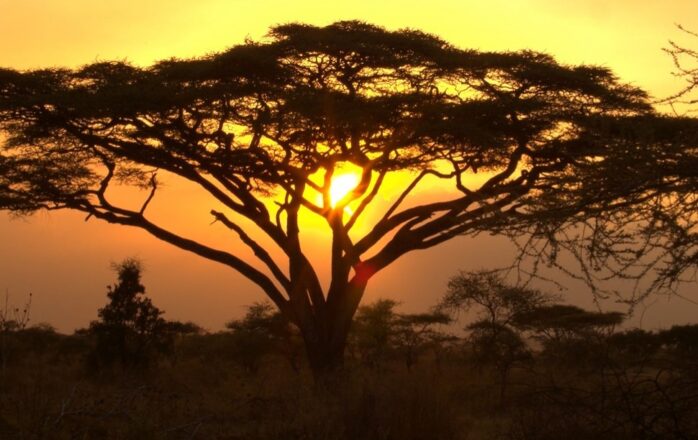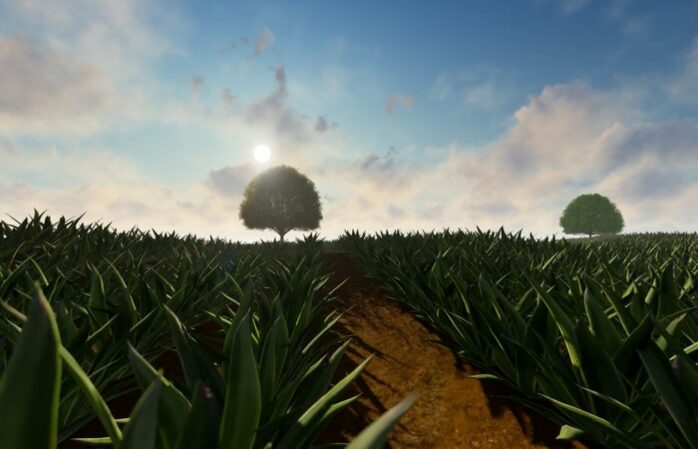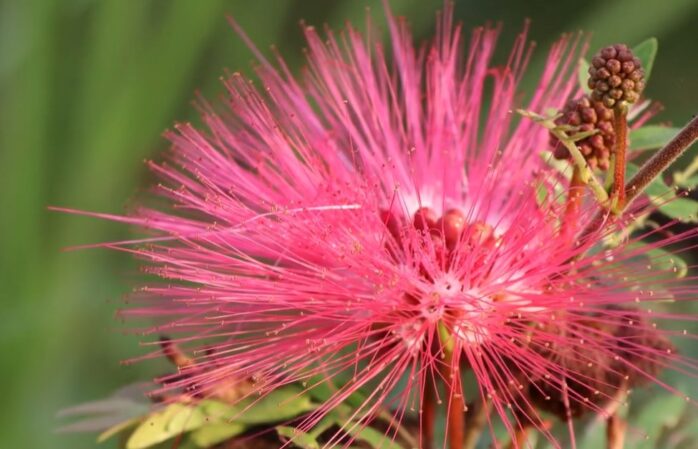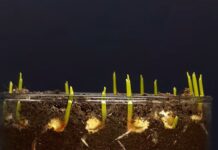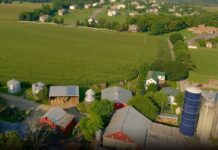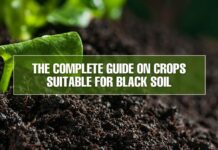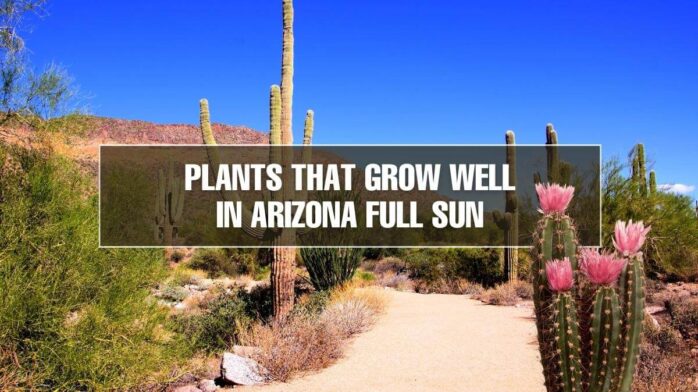
If you have a sunny place in your yard that would be ideal for a flower bed, make sure to pick plants that will grow in the heat without needing a lot of extra attention. If you wish to cultivate annual blooms in a hill garden, this can be a challenge.
Some plants thrive in our sunlight, while others wilt under direct sunlight. Whenever the temperature rises above 95 degrees, people use air conditioning to flee the sweltering summer heat, but our plants don’t have the same luxury.
Annuals are less tolerant of heat and sun than perennials with strong taproots and water-conserving foliage. Because they spend so much of their energy creating so many blossoms, annual flowers never get a chance to build a deep root system.
Here are our fourteen picks for plants that can withstand both heat and moisture. You’ll still need to irrigate these faves regularly, but they won’t perish in the warmth of the day or take a lot of extra attention.
Acacia
Acacias are a varied collection of arid-zone landscaping plants that comprise trees, shrubs, and groundcovers. Based on the species, acacias provide shade, screening, and beautiful flower displays for your landscape.
They prefer full light and may grow in a variety of soil types. To make a stronger root system, plant acacias need frequent but periodic deep irrigation.
This is achieved by washing along the canopy’s edges rather than at the trunk’s base. All Aussie acacias contain modified leaf stems known as phyllodes that serve the same purpose as the leaves.
Agave
Agaves are amazing leaf succulents with rosettes that vary in color, shape, and size. In the southwest, Mexico, and Central America, there are roughly 200 kinds.
The large rosettes provide a striking contrast to the fine texture of desert-adapted shrubs and trees in the environment. Agaves are among the most valuable desert plants, as they can endure extremes of heat, frost, drought, and soil salinity.
Agave, sometimes known as century plants, can take anywhere from 5 to 50 years to blossom, with a beautiful flowering stem. The plant gradually dies after flowering. They do, though, often produce offspring, seeds, or bulbils (plantlets).
Avoid planting agaves near walkways, windows, or terraces due to their spiky leaves and big size.
Agaves, especially medium to tiny ones, look great in pots or mixed together with groundcovers & meadows for a vibrant environment. They’re best planted in the fall or late winter. For improved plant health, watering should be deep and occasional.
Aloe
Aloes are beautiful plants of southern and eastern Africa that provide some of the finest colors for Arizona gardens during the cold season with their amazing and long-lasting floral show.
Aloes come in a variety of shapes and sizes, from modest groundcovers to tree-like varieties.
Small clustered forms perform well in containers, and tree forms, especially when combined with groundcovers and meadows, work well as emphasis or mass plantings.
Hummingbirds are attracted to their conical flowers, which are borne on long-blooming stems and vary in color from yellow to cherry to deep red-orange. Along the borders of the sharp-tipped leaves are light to dark brown teeth.
Once-blooming, the rosettes don’t die, and several aloe species develop spurs that grow over enormous areas. Aloes have a broad range of durability; however, at 24 degrees F, many types undergo some harm to their rosettes and flower stems.
Caesalpinia (Bird of Paradise)
Caesalpinia adds a splash of color to the landscape. Their enormous colorful blossoms last for a long time and provide vibrant color—the fluffy leaf clashes with the colors of yellow, blazing red, and orange.
Bird of paradise trees and shrubs vary greatly in size from medium plants to tiny trees.
They grow in the hot desert and require little watering to flourish. To extend blossom and keep plants healthy, give them a thorough watering every two weeks when they’re flowering.
Bird of paradise tolerates a wide range of soil types but favors well-drained soils. Chlorosis can develop in heavy soils, although iron chelate can be used to treat it.
When deciduous trees are latent in the fall, they can be heavily clipped, and new shoots will emerge in the spring. The shape will be more round and tight as a result of this pruning. It is not advised to eat the seeds.
The blossoms draw both hummingbirds and butterflies.
Calliandra (Fairy Duster)
The exquisite stamens that make up the tufts or ball-like plants are referred to as calliandra.
Their shades, which vary from pastel pink to deep scarlet, are stunning. Flowers are produced against a theme of finely split, lacy-looking leaves on these small and medium shrubs.
Calliandra is a versatile plant that may be used in a range of landscape locations. Fairy dusters are an amazing fit for animal gardens, giving a splash of color as well as a source of food for hummingbirds.
Calliandra also works well in more classic landscapes, where their almost evergreen leaves and delicate blooms add color and intrigue.
Fairy dusters are drought resistant and blossom freely in full light and need very little care to keep their natural rounded appearance. They withstand a wide range of soil types and heal fast if cold damage occurs.
Dalea
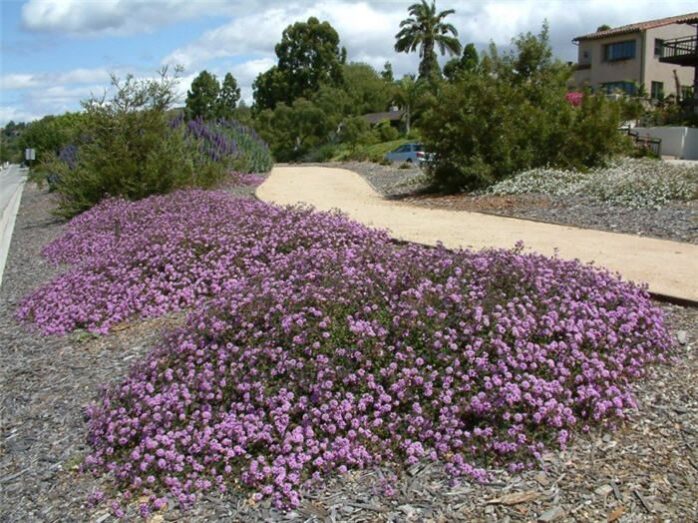
Daleas are a varied group of plants with a delicate texture, vibrant winter and early spring hue, and the ability to withstand our blazing hot summers.
Trees, shrubs, and plantings make up almost 200 species of these plants, most of which are specific to the Southwest’s deserts.
The majority of Daleas recently added are ground covers or shrubs with heights ranging from 1 1/2 to 5 feet.
Pollinating flies and butterflies are attracted to the pea-like blossoms, which range in color from violet to rose to yellow. Quail, doves, and finches are among the species that appreciate the seeds.
Eremophila
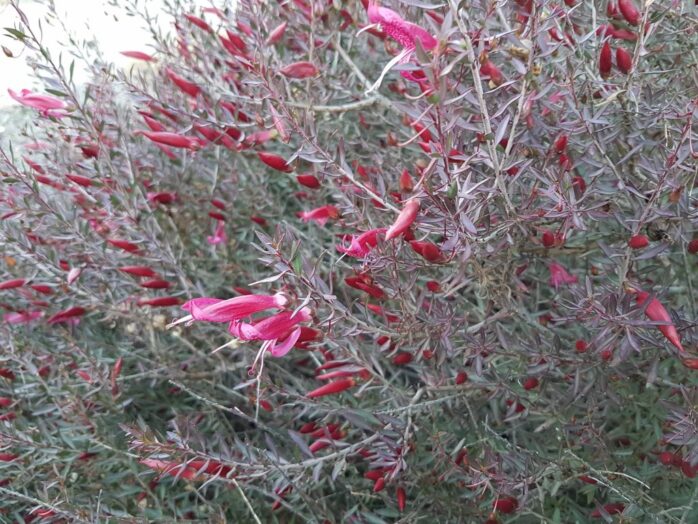
This class of perennial plants is native to Australia’s mid to arid regions. The precise word, eremos, translates to “desert” or “lonely area.” Emu bushes, or eremophilas, exist in a wide range of soils that are quite similar to the ones in the Southwest.
Most of those are drought resistant and can go without water for long periods. The flowers of eremophila come in a variety of colors, including white, yellow, violet, mauve, pink, and red.
The tubular blooms’ throats are occasionally visible, but they always entice hummingbirds as well as other nectar feeders.
Leucophyllum (Texas Sage)
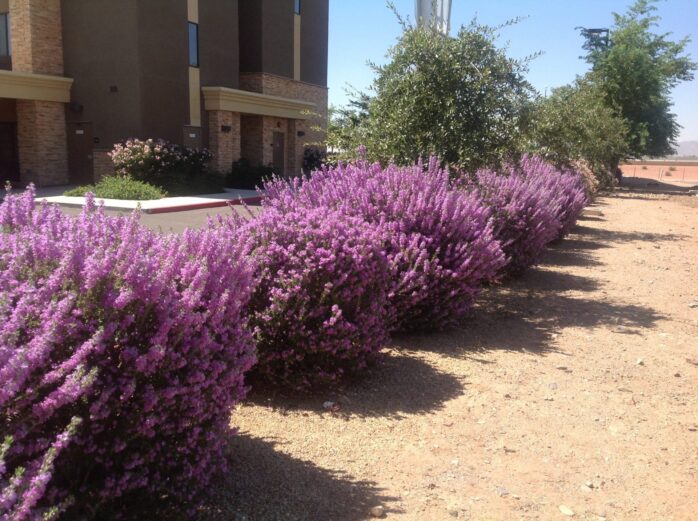
Texas sages are one of the most dependable and trouble-free low-water-use species in Arizona. There has only been one choice for Texas sage (Leucophyllum frutescens) available at local nurseries 15 years ago.
Several new species and variations have been introduced into cultivation in recent years. These low-maintenance evergreen trees are natural to Texas and Mexico and thrive in our deserts. Full light and adequate drainage are needed for these shrubs.
This plant now comes in a variety of grown sizes, and when the right Texas sage is chosen, no pruning is necessary… If you want to keep the shape of your tree, you can prune it carefully (do not shear).
Penstemon
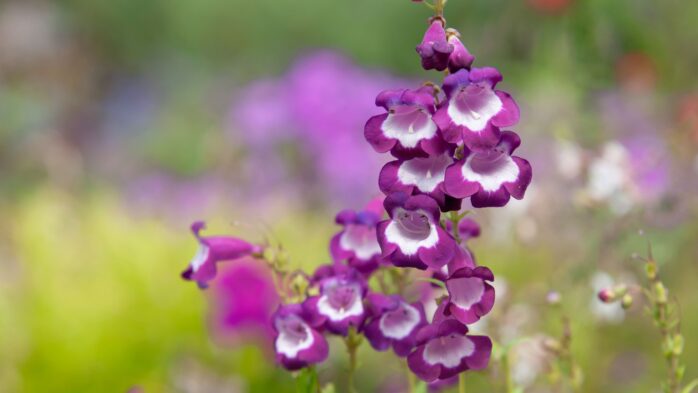
It isn’t easy to pick just a few penstemon kinds because there are so many. The trumpet-shaped buds of these plants vary in color from orange to red, violet to white, and anything in between when they bloom. Flowers are attractive to hummingbirds.
Low-growing soil covers with short spikes or tiny base rosettes that grow high, long-lasting flower spikes are among the traits of penstemons.
Penstemons prefer full light, but in the arid desert, they need shelter from the reflected sun or heat. Our annual temperature swings don’t bother most of them. They need good drainage and can withstand drought.
They need very little water during the wintertime. However, irrigation is essential during the drier months. In the summer, avoid overwatering.
They easily replant themselves, resulting in a rainbow of color in your yard. Grow 2 to 3 ft apart since penstemons dislike being crowded and need plenty of room to flourish.
Salvia (Sage)
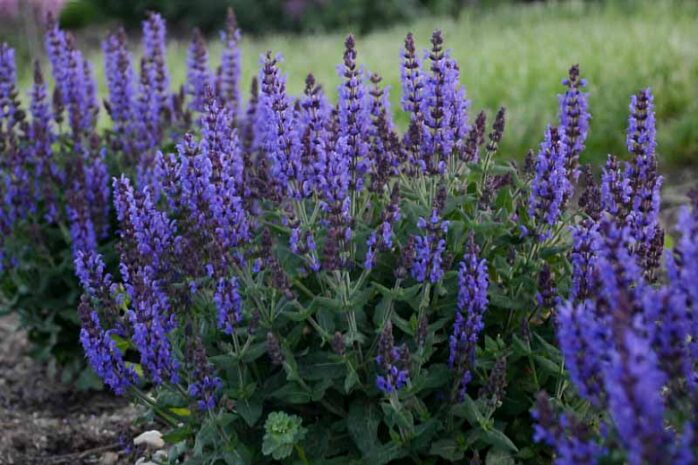
SalviaSalviaSalviaSalvia comes in a wide range of shapes, flowers, and seasonal hues, with over 750 varieties. Sages are noted for their beautiful, scented, and long-lasting flowers.
The blooms appear in long, densely packed clusters or widely split on tall spears above the rounded shrubs. Whereas most salvias are known for their nice blue, violet, or purple flowers, some yield brilliant reds, scarlets, orange, yellow, or even white flowers.
Many types are suited to dry regions and make lovely Xeriscape additions. Salvias are great for attracting hummingbirds, butterflies, and bees to native fauna gardens.
Some have strong scents that deter feeders like rabbits. All of them are non-toxic, but most of them can be used medicinally, as herbal, or in drinks.
Verbena

Verbenas are heat-loving annual groundcovers that bloom from spring to summer and provide magnificent color. Verbenas give color and charm to the environment when used in large groups.
Verbenas thrive in warm, full light, and well-drained soil. Weekly irrigation during their flowering time aids in the growth of beautiful flower shows. After the flowers have finished blooming, the watering can be lessened.
During the summer, a light nitrogen application revives the plants, but additional fertilizer is rarely needed. The plants will look cleaner if the dried flower stems and dead foliage are pruned off in early summer.
Because verbenas are short-lived, you may expect to replace them every two to three years. Some varieties, on the other hand, can re-seed and naturalize in the terrain.
Yucca
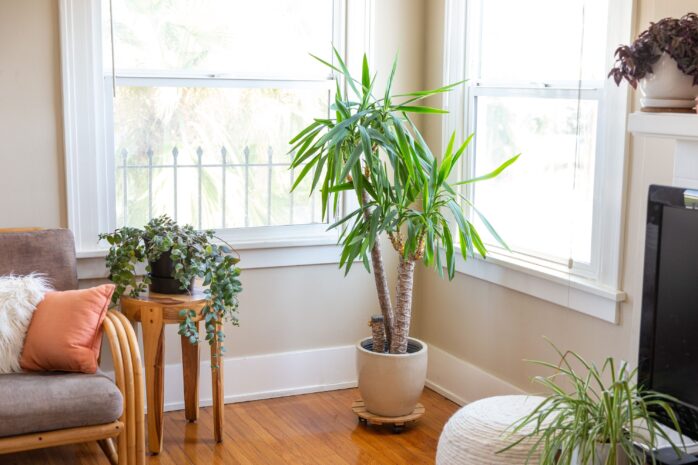
Yuccas are striking perennial accent flowers with a variety of textures and stunning white flowers. When mixed with smooth plants like ruellia and leucophyllum, they add intrigue and focus areas.
Yuccas require good irrigation, full sunlight exposure and are cold-weather hardy. They can survive with very little water, but they do gain from monthly baths in the summer. They’re best planted in the autumn and winter.
Yuccas add a southwestern flair to the environment, but their placement requires careful consideration. Avoid putting yuccas near pathways, windows, or patios due to their spiky leaves and big size.
Yucca is a fantastic choice for backdrop plantings because of its unique shape. Remove the old foliage of yuccas as soon as possible; they guard the plants against heat, cold, and bugs.
Prosopis (Mesquite)

Mesquites, or Prosopis, are incredibly flexible and resistant to a broad range of growing conditions. They can adapt to either a lack of or an abundance of water and will withstand droughts by limiting their growth.
Some species have a twisted nature, which some relate to drought conditions, while others ascribe to pruning tactics. Mesquites have long provided shade, food, and medicines to desert dwellers.
Mesquites feature dark green leaves with a sculpted growth habit and tough, dark bark. In the springtime, they yield yellowish to cream-colored catkin flowers, which are followed by seeds of various shapes and sizes.
The top extends to the full width of 20 to 35 feet, based on the type. To preserve stability, mesquites should be encouraged to produce broad roots. This is managed by watering throughout the canopy’s rim rather than at the trunk’s bottom.
Oenothera (Evening Primrose)
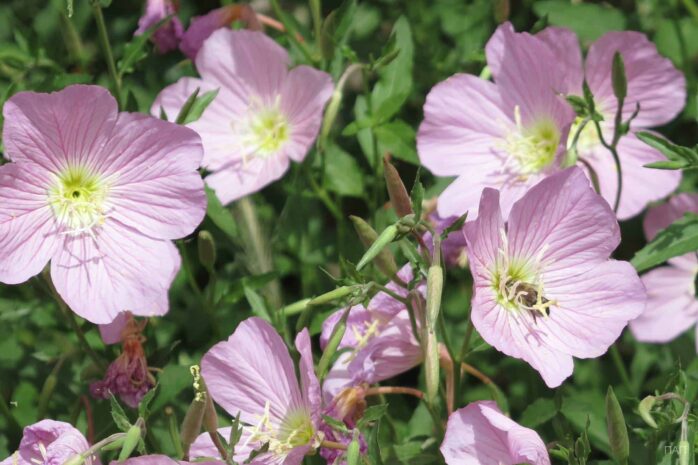
Oenothera is clustering or branching groundcovers common in North America’s lowlands, grasslands, and deserts.
They produce carpets of vibrant colors in desert settings with their huge, stunning four-petaled blossoms in pink, white, or yellow. Although most Oenotheras flower at night, the majority will remain open till midday.
These plants are adaptable to a wide range of landscape conditions, from direct sun to mild shade. They look especially good in groups and as a groundcover or hue splash under arid trees like palo verdes and mesquites.
Evening wildflowers are a beautiful perennial bloom that blends in well with other annual wildflowers. Evening primroses of all kinds generate pods that provide a plentiful food supply for desert finches. The blooms are a magnet for nocturnal animals.
Final Word
Arizona is known to have hot summers and not all plants can thrive under such high temperatures.
We have curated a list of some of the plants that grow well under direct sunlight in Arizona. You can plant any of them in your yard and watch them grow into beautiful trees.

